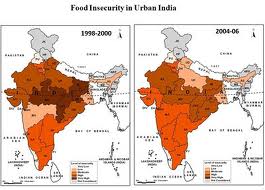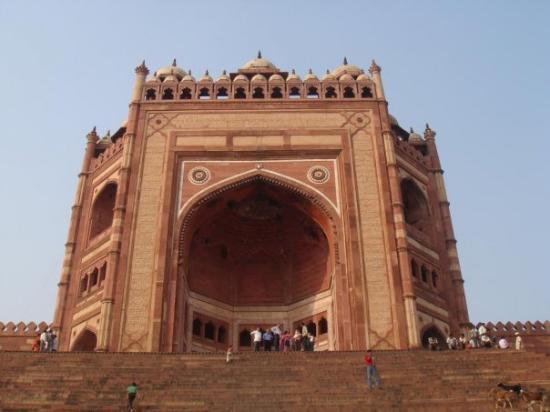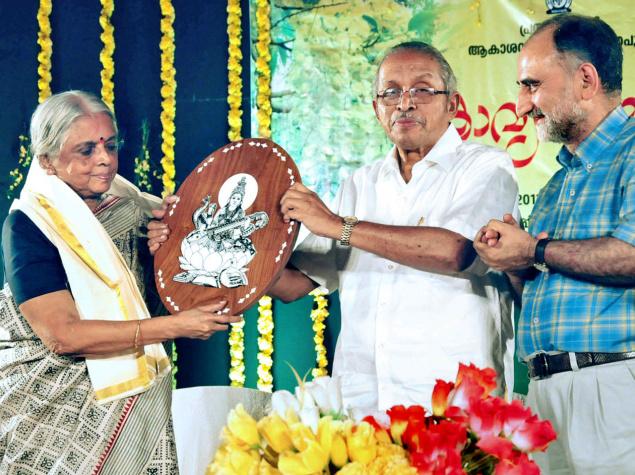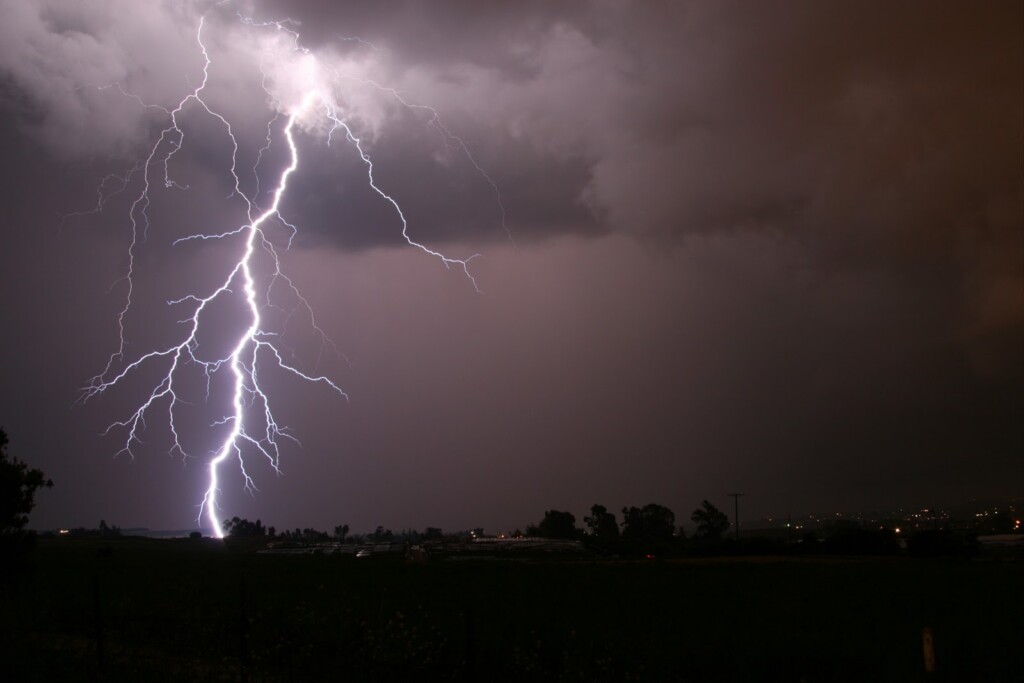If we see India in the light of achievement made by it during the last three decades we at once become aware that economic opportunities have expanded and entrepreneurial avenue has exploded in a very good measure.
We also find that some sector which was lying in disarray are now organised on very sophisticated lines and millions in the upper middle and lower middle classes can have the bliss of rising above their lot and making their life more meaningful. So far as the question of extreme poverty is concerned, on close analysis, we find that the extent of poverty has come down considerably, which until three decades back, i.e. up to 1982, according to Nobel laureate Dr. Amartya Sen, had not seen any obvious decline. But we can easily discern that decline in poverty has not shown any uniform trend across regions as well as communities. For instance, there has not been any significant change in the plight of most of the people belonging to the Dalit or Adivasi communities living in Madhya Pradesh, Chhattisgarh, Bihar, or Uttar Pradesh. Benefits of growth have been felt, but not up to the required level. In other words, the incidence of poverty has declined, but a quarter of die population or around 300-350 million people are still desperately poor.
It should not go without mention that “The State of Food Insecurity in the World 2012”
presented new estimates of undernourishment based on a revised and improved methodology.
The estimates showed that progress in reducing hunger during the last two decades had been better than previously believed and also underlined that given renewed efforts, it might be possible to attain the UN Millennium Development Goals target at the global level by 2015. Nevertheless, the number of people suffering from chronic undernourishment is unacceptably high, and eradication of hunger remains a major global challenge, judged
from this viewpoint, the National Food Security Bill cleared by the Union Cabinet on March 19, 2013 is a very significant step.
It gives legal entitlement to 67 percent population (including 75 percent rural and 50 percent urban) for subsidised grains under the Targeted Public Distribution System (TPDS). A beneficiary will be entitled to 5 kg of rice, wheat or coarse cereals at Rs. 3, 2 and Re. 1,
respectively a kg a month and will be identified by the States based on parameters prescribed by the Union Government. The Union Cabinet gave its nod to the 71 amendments proposed by the Food Ministry, including the one that said that the 2.43 crore Antvodaya Anna Yojana beneficiary households would continue to get their quota of 35 kg grains a month under the TPDS. In its revised form, the Bill favours the “two-child norm” by denying the maternal benefits to a pregnant woman beyond two live births. The Law Ministry quoted the Supreme Court judgments and the National Population Policy of 2000 to justify the provision. As per the Bill, the subsidized prices of grains may be revised after three years to the level of the minimum support price paid for procurement of grains. While the existing allocation of grains to the States would be protected, the cost of transporting grains to ration shops would not be passed on to consumers as had been proposed earlier.
When a discussion on food insecurity is carried out, we must take into account the official estimates of poverty in India. Household consumption expenditure surveys of the National Sample Survey Office (NSSO) have formed the basis of the official analysis and conclusions about family consumption baskets and from that of consumption poverty. Till very recendy, the official estimates of poverty had been based on the recommendations of the Expert Committee chaired by the late Professor D.T. Lakdawala which had submitted its recommendations in 1993. However, over the years, the findings on poverty made in line with the methodology of the Lakdawala Committee began to be criticised, as these were found to be ‘too low’ and were not in line with the general advancement of the economy. In 2005, die Planning Commission appointed a new Expert Committee, chaired by the late Professor Suresh Tendulkar, which submitted its recommendations in late 2009. The Tendulkar Committee made several deep-rooted changes in the methodology for adjusting poverty lines to price changes and substantially revised upward the rural poverty line vis-a vis the Lakdawala Committee, both for 1993-94 and for 2004-05, which was the latest large survey of the NSSO on household consumption expenditures then available. To determine ‘fair’ poverty line has always been a contentious issue. This primarily flows from the fact that poverty, or in a broader sense, deprivation,
To determine ‘fair’ poverty line has always been a contentious issue. This primarily flows from the fact that poverty, or in a broader sense, deprivation, is a cultural construct specific to a point in time. It is inconceivable that the sense of what constitutes poverty would remain unchanged as society becomes wealthier, incomes rise and modern amenities become widely available. Progress by its very nature inherently does and should recalibrate the very notion of what constitutes poverty and deprivation. The recommendations of the Expert Committee chaired by the late Professor Suresh Tendulkar were adopted by the Planning Commission. Applying this methodology to the NSSO, large survey of 2009-10 showed that the poverty ratio had declined by 7 percentage points for the country as a whole between 2004-05 and 2009-10. The annual rate of decline in this period was found to be two times more than that for the previous periods.
This finding was, however, criticised by some for using a poverty line that was invariably described as being too ‘low’. Some points need to be made in this regard. First, what we have is the NSSO data which is collected on the basis of household surveys that seek to assess family expenditure budgets. Since households are of different sizes, the NSSO normalises the data by expressing their finding in per capita terms. These neither relate to single-member households nor to family income. Second, the finding that poverty has declined much faster in the period 2004-05 to 2009-10 is valid irrespective of where we choose to draw the poverty line.
If we use the Tendulkar poverty line (PL), the decline in the period is found to be 7.3 percentage points. If we use a poverty line 30 percent higher, the decline would be 7.8 percentage points. Likewise, at 50 percent higher, the decline is 6.5 percentage points. In fact, the decline in the poverty ratio far different levels higher and lower than the Tendulkar PL shows that the decline not only occurs at every level higher or lower than the Tendulkar PL, but that the decline is ostensibly faster at lower levels of PL, particularly in rural areas, namely within the range of ±30 percent of the Tendulkar PL, that is amongst the lower end of the consumption distribution. On close analysis of distribution it appears that the pace of reduction is lower both for rural and urban areas. However, this is because the reduction is being measured as the annualised rate of decline in percentage points of poverty. If the initial poverty ratio is low, then the decline in terms of percentage points cannot be other than small. To see what the pace of decline at the lowest income groups, the rate of decline has been normalised by expressing it in terms of a ratio of the initial percentage of persons falling under that PL or expenditure class. It also becomes quite clear that the rate of decline has been faster amongst the lowest income groups in rural areas and this phenomenon is even more marked in the urban areas. The positive distributive implications of the reduction of poverty at the overall level, and even more so the greater impact on the relatively poor at the lower end of the income distribution, is a very encouraging fact.
According to the Twelfth Five-Year Plan document, a remarkable characteristic of regional disparities in India is the presence of backward areas even within States that have grown faster and are at relatively high income levels on average. An authoritative study that identifies India’s most deprived districts, identifies those districts that fall in the bottom 25 percent under various categories such as head count ratio (HCR), food sufficiency, IMR and literacy rate. On examining this dataset, we find that the most backward districts in terms of these parameters lie not just in the undivided BIMARU States, but also in States that have grown faster and are at a relatively high income level on average. This reveals the extent of intra-State disparities. For instance, district-level poverty estimates show that the poorest districts in India lie not only in undivided BIMARU States and Odisha, but also in rich States such as Maharashtra, Karnataka and Tamil Nadu. The disparity across district-level HCR is stark in the case of Maharashtra. At one end of the spectrum, there are districts with poverty HCR exceeding 40 percent such as Wardha (44.9 percent), Washim (43.1 percent), Akola (43.1 percent), Amravati (47.6 percent), Bhandara (44.7 percent), Buldhana (46.6 percent), Dhule (40 percent), Gondiya (44.7 percent), Nanded (43.9 percent) and Nandurbar (40 percent). While at the other end of the spectrum, there are districts such as Mumbai and Pune with HCR of 11.3 percent and 14.1 percent, respectively. Similarly in the case of Karnataka, there are districts with extremely high poverty FICRs, such as Bellary (43.3 percent), Gulbarga (42.2 percent), Koppal (48.8 percent) and Raichur (48.8 percent); while there are also districts with extremely low percentage of poor such as Kodagu (6.7 percent) and Bangalore (8.6 percent). In Tamil Nadu, too, we find the range in district-level HCR is wide with Tiruvanamalai, having an HCR of 60.2 percent and Toothukudi, having an HCR of 3.3 percent. The fact that these three States have lower poverty HCRs than the national average and yet have the poorest districts in India is an indicator of the extent of intrastate inequalities.
On further examination of this dataset, we find that disparities are not just in terms of income, but also non¬income indicators. Importantly, nonincome indicators,
such as hunger [defined in National Sample Survey (NSS) terms] exhibit a spatial distribution too. Even the rich States with their higher levels of PCI have some of
the most hungry districts in the country. These include Andhra Pradesh (East Godavari, Khammam, Mahbubnagar), Haryana (Fatehabad, Hisar), Karnataka (Gulbarga), Kerala
(Malappuram, Palakkad, Thiruvananthapuram, Thrissur), Maharashtra (Kolhapur, Ratnagiri, Satara, Sindhudurg). In terms of infant mortality, the worst districts are located not just in the BIMARU States of UP, Odisha, MP, Chhattisgarh and Rajasthan, but also a few neighbouring districts of Karnataka and Andhra Pradesh. Also, even though Maharashtra’s IMR is near the best in the country, its worst districts have IMRs that are higher than those of States with lower ranks. Districts identified as backward under the literacy criterion while concentrated in Odisha, undivided BIMARU, are also present in richer States such as Karnataka (Gulbarga, Koppal, Raichur, Chamarajanagar), Andhra Pradesh (Adilabad, Karimnagar, Kurnool, Mahbubnagar, Medak, Nizamabad, Srikakulam, Vizianagaram), Gujarat (Banaskantha, Dohad, Kachchh), Himachal Pradesh (Kinnaur) and Punjab (Mansa). Importantly, all these States, barring Andhra Pradesh, had a literacy rate higher than the national average. The fact that such States would include those districts that fall in the category of the lowest 25 percent in terms of literacy highlights the extent of intra- State disparities. In addition to revealing the extent of disparities between districts in a State, the fact that the richest States in India have districts with the highest poverty, highest IMR and lowest literacy rates also highlights the limitations of PCIs in measuring the economic and social progress in society.
A discussion on regional disparities in India would be incomplete without mentioning that there is considerable intra-district inequality too, as some blocks in a district are better off than others. An analysis at the block level is severely constrained by data availability. An India Development Foundation (IDF) study, which estimates poverty headcount ratios at the block level, presents a clear picture of intradistrict disparities. For instance, in the Madhepura district of Bihar, poverty HCR varies from 19.83








